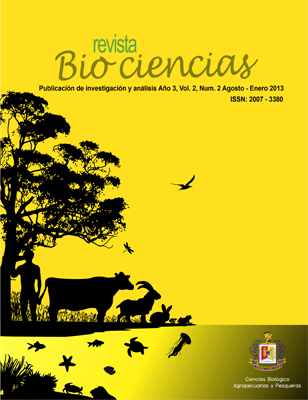Resumen
Chinchilla pelt is a rare and expensive fur. Therefore, breeding these animals is a profitable activity. Confirmed acute cases of aflatoxinintoxication have been reported in Argentinean farms. The aims of this study were i) to evaluate mycobiota and AFB1-producing species in chinchilla feeds ii) to investigate their natural AFB1 contamination and iii) to analyze histopathological lesions in chinchilla livers. Feed samples (A: fur chinchillas, B: mother chinchillas, C: lucerne cubes) were collected from a factory anda farm. Livers of sacrificed chinchilla from the farm were macroscopically and microscopically examined. Total fungal counts of feed C exceeded 1x104 CFU g-1. Aspergillus, Fusarium and Penicillium were the prevalent genera, while A. flavus, A. fumigatus, F. verticillioides and F.proliferatum were the prevalent species. 50 % of A. flavus strains from factory samples and 69.7 % from farm samples produced 2.78 to 8.64 μg g-1 and 0.66 to 58.8 μg g-1 AFB1, respectively. Aflatoxin B1 was detected only in feeds from the farm, finding the highest incidence in feed C. Toxin levels varied between 1.90 and 97.34μg kg-1 AFB1. Mean levels in feed A and C exceeded 20 μg kg-1. Macroscopic examination of livers revealed normal appearance, size and color. However, histopathological examination indicated 63.3 % showed slight to moderate lipidde generation with diffuse cytoplasm vacuolation,9 % intense lipid cytoplasm vacuolation and 27.3 % hydropic degeneration and nuclear vacuolation in hepatocytes. A periodic monitoring of aflatoxins in feeds and their ingredients can prevent acute outbreaks and economic losses caused by chronic exposure.

Revista Bio Ciencias por Universidad Autónoma de Nayarit se encuentra bajo una Licencia Creative Commons Atribución-NoComercial-SinDerivadas 4.0 Unported.
Basada en una obra en http://biociencias.uan.edu.mx/.
Permisos que vayan más allá de lo cubierto por esta licencia pueden encontrarse en http://editorial.uan.edu.mx/index.php/BIOCIENCIAS.licencia de Creative Commons Reconocimiento-NoComercial-SinObraDerivada 4.0 Internacional






